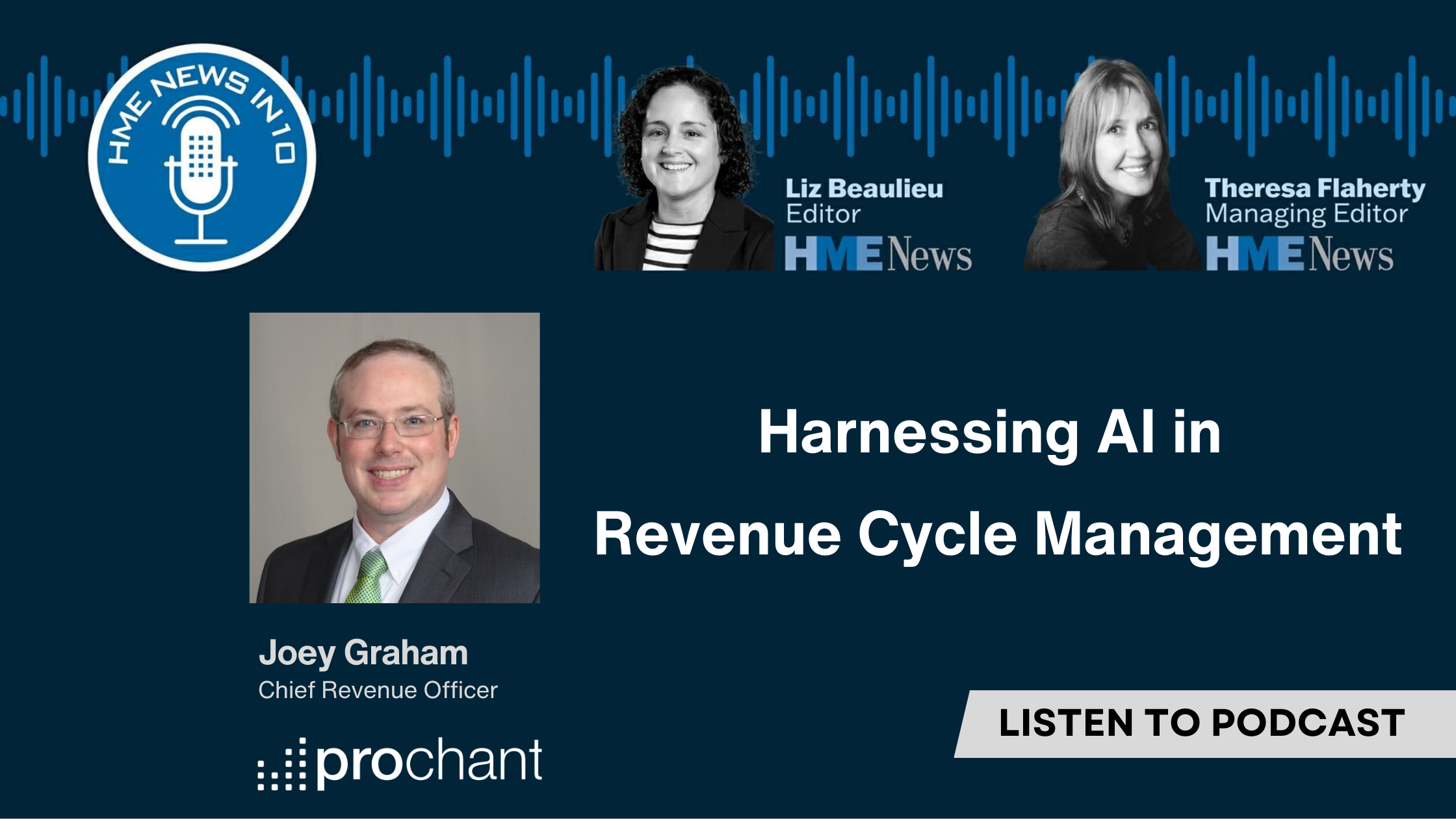The Future of HME Revenue Cycle in the Age of AI: A Conversation with Joey Graham on HME News in 10
In a recent episode of HME News’ podcast, HME News in 10, Joey Graham, Chief Revenue Officer at Prochant, discussed the transformative impact of AI on the HME industry. Historically, healthcare and HME have lagged behind other sectors in adopting new technologies, but this trend is changing. Graham explained why AI is no longer science fiction and how it promises substantial ROI, despite its high upfront costs, particularly in revenue cycle management (RCM).
Graham emphasized that the integration of AI into HME operations is inevitable and already underway, although gradually. He pointed out that while healthcare traditionally lags other industries by about a decade, HME has been even slower, trailing by around 20 years. However, the gap is starting to close.
Why Revenue Cycle Management is Ripe for Evolution
Graham identified several reasons why the revenue cycle is a critical area for HME operations and ripe for AI-driven transformation:
- Complexity: HME reimbursement is notoriously complex, involving numerous steps, multiple payers and constantly changing rules. This complexity makes it challenging for human operators to manage efficiently.
- Regulatory Changes: The HME industry is frequently subject to regulatory updates, with new codes and modifiers adding layers of difficulty. Traditional methods of tracking these changes, such as old documents and spreadsheets, are inefficient and prone to error, leading to financial impacts.
- Patient Experience: A smooth RCM process significantly enhances the patient experience by reducing stress related to billing and payments for medical supplies and devices.
AI’s Role in Transforming HME Operations
Graham highlighted that the HME industry is already seeing early signs of AI adoption, particularly in front-office and intake processes. The true potential of AI lies in its ability to process vast amounts of data quickly and accurately, identifying patterns that humans might miss. This capability can automate routine tasks like data entry, order confirmation, eligibility verification and payment posting.
The Future of HME Revenue Cycle
When an HME company embraces AI in its revenue cycle, there are several areas of benefit:
- Operational Efficiency: Streamlined processes lead to faster claim submissions and quicker reimbursements, resulting in cost savings and reduced labor costs.
- Enhanced Patient Experience: Patients benefit from faster and more accurate service, with fewer billing issues with insurance.
- Scalability: Providers can handle larger volumes as they grow or acquire other companies without proportionally increasing staff.
Pitfalls and Considerations
Despite its potential, AI implementation comes with challenges. Graham cautioned providers to be vigilant about data privacy and security, especially considering recent high-profile breaches. Ensuring compliance with HIPAA regulations and attaining certifications, such as HITRUST and ISO27001, is crucial.
Another concern is over-reliance on AI. If technology fails, providers must have contingencies in place. Human oversight is essential to catch errors that AI might miss. Integration challenges also persist, given the variety of systems an HME provider uses, from document management to referral systems.
The HME industry stands on the brink of a technological revolution, with AI playing a pivotal role in transforming revenue cycle management. As Joey Graham emphasized, while the road to full AI integration is complex and full of challenges, the potential benefits for operational efficiency, patient experience and scalability make it a journey worth undertaking. By selecting the right tools and ensuring proper implementation, HME providers can position themselves at the forefront of this exciting evolution.

